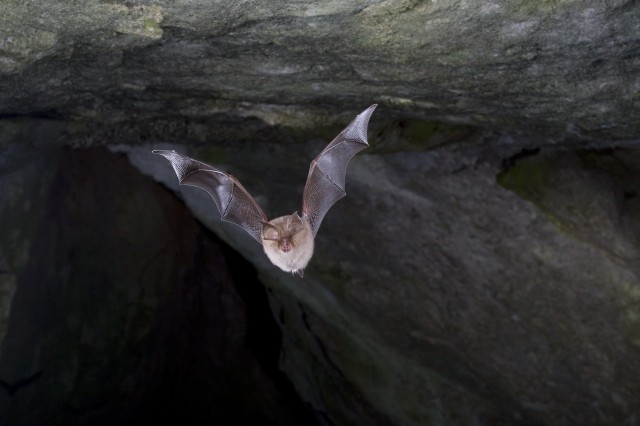Lesser horseshoe bat
A species of Horseshoe bat Scientific name : Rhinolophus hipposideros Genus : Horseshoe bat
Lesser horseshoe bat, A species of Horseshoe bat
Botanical name: Rhinolophus hipposideros
Genus: Horseshoe bat
Content
Description People often ask General Info
 Photo By F. C. Robiller / naturlichter.de , used under CC-BY-SA-3.0 /Cropped and compressed from original
Photo By F. C. Robiller / naturlichter.de , used under CC-BY-SA-3.0 /Cropped and compressed from original Description
The lesser horseshoe bat is one of the world's smallest bats, weighing only 5 to 9 grams, with a wingspan of 192–254 mm and a body length of 35–45 mm. It has strong feet that it uses to grasp rocks and branches, and can see well in spite of its small eyes. Like most bats, lesser horseshoe bats live in colonies and hunt their prey by echolocation, emitting ultrasound from specialized round pads in their mouth. The base of its fur, which is soft and fluffy, is light grey in colour, with dorsal side fur smoky brown and the ventral side grey, with the exception of juvenile bats which are entirely dark grey. Ears and wing membranes are a light greyish brown. When hunting they are quick and agile, often flying within five metres of the ground while avoiding contact with bushes and shrubs. The lesser horseshoe bat eats small insects, most of which are gleaned from stones and branches. Their favorite types of prey include flies, mosquitoes, butterflies, moths, and spiders. The average lifespan of Rhinolophus hipposideros is 3 years, although some individuals have been known to live far longer. 
Size
3.5 - 4.5 cm
Colors
Brown
Gray
Life Expectancy
3 years
Nest Placement
Cavity
Feeding Habits
Lesser horseshoe bat primarily consumes small insects, preying on flies, mosquitoes, butterflies, moths, and spiders. It gleans its prey from stones and branches, showcasing a preference for certain types of invertebrates.
Habitat
The lesser horseshoe bat lives in warmer regions in foothills and highland, in particular wooded areas or areas of limestone, where it roosts in caves. In summer its range has been recorded up to 1160 m above sea level, and up to 2000 m in the winter, with the highest known nursery roost at 950 m. The species is sedentary, with the average movement between summer and winter roosts between 5 and 10 kilometers, although the longest recorded distance is 153 kilometers. 
Dite type
Insectivorous
People often ask
General Info
Feeding Habits
Bird food type
Behavior
Lesser horseshoe bat exhibits a nocturnal nature with most of its activity happening during the night. Known for roosting in caves, this species uniquely selects smaller and more thermally stable caves for hibernation. Lesser horseshoe bat is a hawking species, preferring to forage in woodland and along hedgerows. Its social behavior is characterized by forming colonies, indicating a social structure. To ensure survival, migration is practiced between different roost sites.
Distribution Area
The species can be found in western Ireland and south-west Britain, with some larger populations in parts of Germany and the Bavarian foothills of the Alps. Rhinolophus hipposideros is widely distributed in the Mediterranean area, occurring in North Africa and on most larger islands to Asia Minor and around the Black Sea. In Asia, it can be found in Kashmir, the Near East, Iran, Iraq and the Arabian Peninsula, as well as part of East Africa. 
Species Status
This species is protected in the European Union under the Habitats Directive. This species is also listed in the Berne Convention and is specifically targeted by the UNEP-EUROBATS convention. Several national legislation are also protecting this species and its habitats in many countries and regions. In order to highlight the importance of protecting this species at the European scale, this species was selected as bat species of the Year 2018-2019 by the pan-European NGO BatLife Europe. 

 Photo By F. C. Robiller / naturlichter.de , used under CC-BY-SA-3.0 /Cropped and compressed from original
Photo By F. C. Robiller / naturlichter.de , used under CC-BY-SA-3.0 /Cropped and compressed from original Scientific Classification
Phylum
Chordates Class
Mammals Order
Bats Family
Horseshoe bats Genus
Horseshoe bat Species
Lesser horseshoe bat